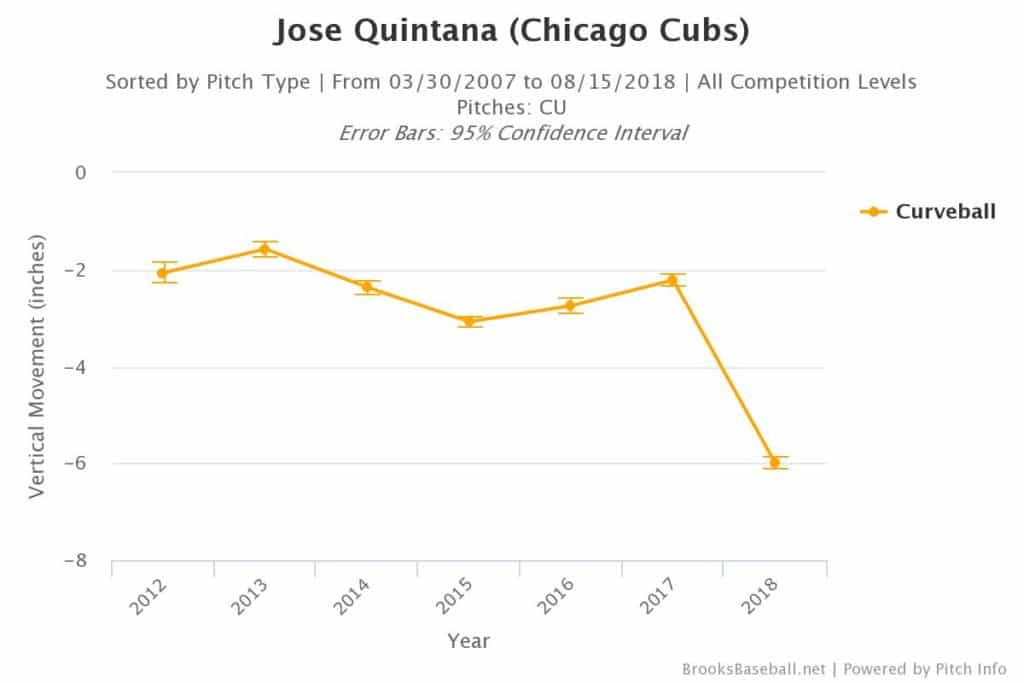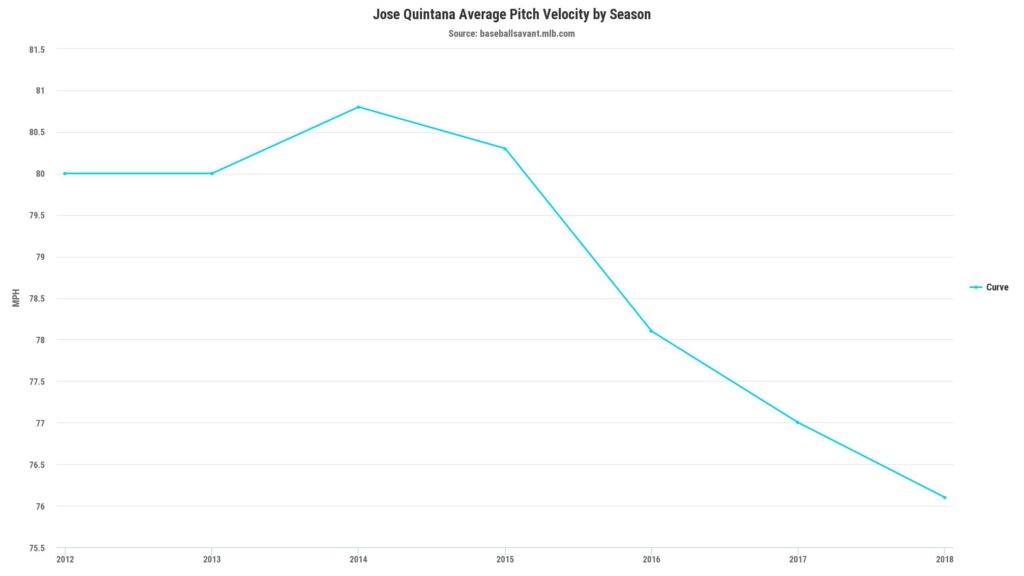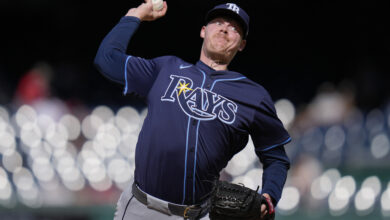
Quintana’s Curveball Getting Career-Worst Results Despite More Spin and Movement
Tuesday afternoon’s debacle wasn’t Jose Quintana’s worst outing of the season, or even of his last four starts, but it’s somewhat disheartening to give up three runs on your first nine pitches. Much of Quintana’s futility stemmed from his curveball, which produced negative value for the fourth straight game and the 11th time in 23 starts.
The curve was really only a big weapon for the lefty in 2015, but it’s turned into a BP pitch lately and he appears to be losing confidence in it. Though he’s throwing it with more or less the same spin rate as in the past two seasons, the .442 slugging against it this season is the highest he’s allowed since 2013 (.449) and the 89.2 mph average exit velocity is the highest since such stats were first measured.
Quintana’s also striking out fewer batters with the curve, posting a 22.4 percent K-rate that’s his lowest since 2013 and a 24.5 percent whiff rate that’s his worst ever by nearly three points. The location doesn’t appear to be drastically different from that 2015 season, nor does the spin rate seem to be amiss. Well, come to think of it, Q’s spin rate has actually been higher over the last three seasons than it was when the curve was at its best.
There’s obviously not a direct correlation between spin and movement, as you can see from the chart below. Q’s curve actually had less vertical movement in 2016 at its highest average RPMs (2,186) than when it spun the least in 2015 (2,039). And this year you’ll note the huge change in drop of almost four additional inches from last season and three inches from three seasons ago.

So what’s the deal.
Well, using Occam’s razor to cut to the chase reveals that Quintana is throwing the hook with markedly less speed than in the past. After sitting around 80-81 mph from 2012-15, the velocity on that particular pitch has dropped steadily over the last three seasons. It was at 80.3 mph in 2015, then has gone to 78.1, 77, and 76.1 in subsequent campaigns.

Despite generating more movement, throwing the pitch that much slower affords hitters that much more time to recognize it. And having additional drop isn’t necessarily a good thing, particularly if the ball is humping up there sluggishly rather than exhibiting sharp breaking action. The way Quintana is throwing the curve right now is tailor-made for hitters with an upward swing. You know, like Ryan Braun.
None of Quintana’s other pitches have seen similar decreases in velocity, so this isn’t an across-the-board trend. His other offerings are all within half a tick of his career average, yet the curve is roughly 2.5 mph slower. If that’s by design, someone needs to get in there and reconfigure the blueprints.
As I’ve said many times before, I’m far from an expert when it comes to breaking down a pitcher’s mechanics to determine what’s going on. But when you see someone struggling with a pitch as badly as Quintana is with the curve and you notice some of these stats jumping off the page at you it, it’s hard not to connect dots. And maybe I’m way off here, maybe this is all a big fluke. Or maybe it’s not.
The answer may not be as simple as just having Quintana throw the curveball harder again, but it sure as hell can’t hurt to try. Unless he’s physically incapable of generating higher velocity on it, in which case the Cubs have a much bigger problem on their hands.

